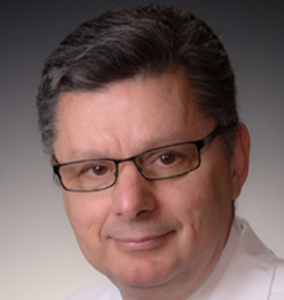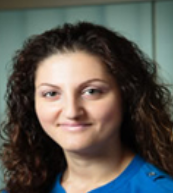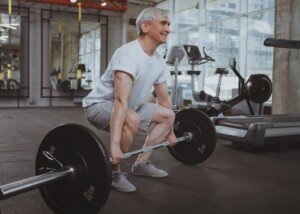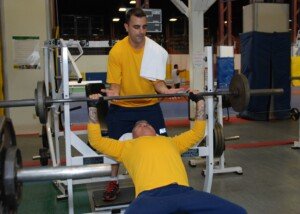
The rule of “Lift no more than your body weight” seems to favor overweight people with aortic aneurysm who aren’t necessarily stronger than slimmer people.
On typical medical sites, the guidelines for lifting weight for people with a thoracic aortic aneurysm go like this:
Lift no more than half your body weight.
Don’t lift more than 50 pounds.
Don’t lift anything heavy enough to make you strain.
That’s basically it. These are very ambiguous guidelines, open to subjective interpretation.
Half One’s Body Weight — WHAT ?
If you take this guideline literally, it means that obese patients with a thoracic aortic aneurysm get a free pass for heavy weight training.
Let’s take a 160 pound man with a thoracic aortic aneurysm who stands 5-9.
The rule allows an 80 pound lift (half his body weight). This means it’s safe for him to, for instance, deadlift 80 lbs.

Freepik.com
He then develops compulsive overeating disorder and piles on a hundred pounds of excess body fat, bringing him to 260 lbs.
According to the “lift no more than half your body weight” rule, he now gets to deadlift 130 lbs.!
Yet gaining a hundred pounds of fat (without gaining a lot of muscle with it) isn’t going to make it easier for this man to lift 130 pounds off the floor.
Suppose his twin brother also has a thoracic aortic aneurysm and is 5-9 and 160. But his brother has been training for a long time with weights, and hence, is much stronger.
His brother can easily deadlift 250 lbs. In fact, it’s a warm-up; no straining.
But the fat guy strains to pick up 130 lbs. Yet according to the “lift no more than half your body weight rule,” the thin, stronger man is penalized!
Let’s suppose the twin loses 20 pounds by taking up running, but can still easily deadlift 250.
According to the strength training guidelines for an aortic aneurysm, he’s now limited to deadlifting only 70 lbs.
Is body weight an absolute as a guideline?
Is being heavy due to obesity protective when lifting weights for those with a thoracic aortic aneurysm?
I posed this conundrum to Konstadinos A. Plestis, MD, System Chief of Cardiothoracic and Vascular Surgery at Main Line Health.
Dr. Plestis had his then-physician assistant, Maysoon Dayoub, PA-C, MPAS, Department of Cardiothoracic Surgery, respond.
Dayoub regularly provides exercise information for Dr. Plestis’s TAA patients.
Dayoub explains, “Some of this is patient specific, depending on size of aorta, patient body surface area vs. size of aorta (we calculate an aortic size index to determine risk; however, this is not a catch-all).
“Also depends on risk factors, such as if a patient has a genetic predisposition to developing aortic dilatation or whether or not there is connective tissue disease involved or abnormal aortic valves.
“That being said, we do not advise patients to lift only half their weight. We typically encourage patients to maintain good blood pressure control and to avoid lifting in excess of 40-50 lbs.
“Now, if someone’s aorta is very dilated, or at higher risk for dissection/rupture, we may limit the lifting to 10-20 lbs. As you can see, this is patient specific and accounting for various factors.”
Being fat and heavy is not a benefit when it comes to the weightlifting guidelines.
However, the “lift half your body weight rule,” as well as the other common guideline of “avoid lifting more than 50 pounds” are designed to cover all bases and to be easier to understand and follow by patients.
“We do encourage lessening the intensity of workouts for patients who regularly exercise and to stretch out their routine,” says Dayoub.
“For instance, if someone is used to running for 30 minutes at a rapid pace, we instruct them to stretch it out and slow down to a jog for instance.
“Or, if someone is used to lifting 60 lbs. for eight reps, we advise to lift 30 lbs. for 10-12 reps. So, you are lessening the workload but stretching out the time it takes to complete the exercise.”
Certainly, a 300 pound patient is never going to be told by his doctor, simply because he’s very heavy, “It’s okay for you to lift 150 pounds even though you have a thoracic aortic aneurysm.”
 Dr. Plestis has 20+ years of experience in aortic surgery. Between 1998 and 2014, he performed 1,225 complex aortic surgical procedures spanning every segment of the aorta, with excellent outcomes.
Dr. Plestis has 20+ years of experience in aortic surgery. Between 1998 and 2014, he performed 1,225 complex aortic surgical procedures spanning every segment of the aorta, with excellent outcomes.
 Maysoon Dayoub currently works in the anesthesiology department in pre-admission testing at the Albert Einstein Medical Center.
Maysoon Dayoub currently works in the anesthesiology department in pre-admission testing at the Albert Einstein Medical Center.
 Lorra Garrick is a former personal trainer certified through the American Council on Exercise. At Bally Total Fitness she trained women and men of all ages for fat loss, muscle building, fitness and improved health.
Lorra Garrick is a former personal trainer certified through the American Council on Exercise. At Bally Total Fitness she trained women and men of all ages for fat loss, muscle building, fitness and improved health.
.









































